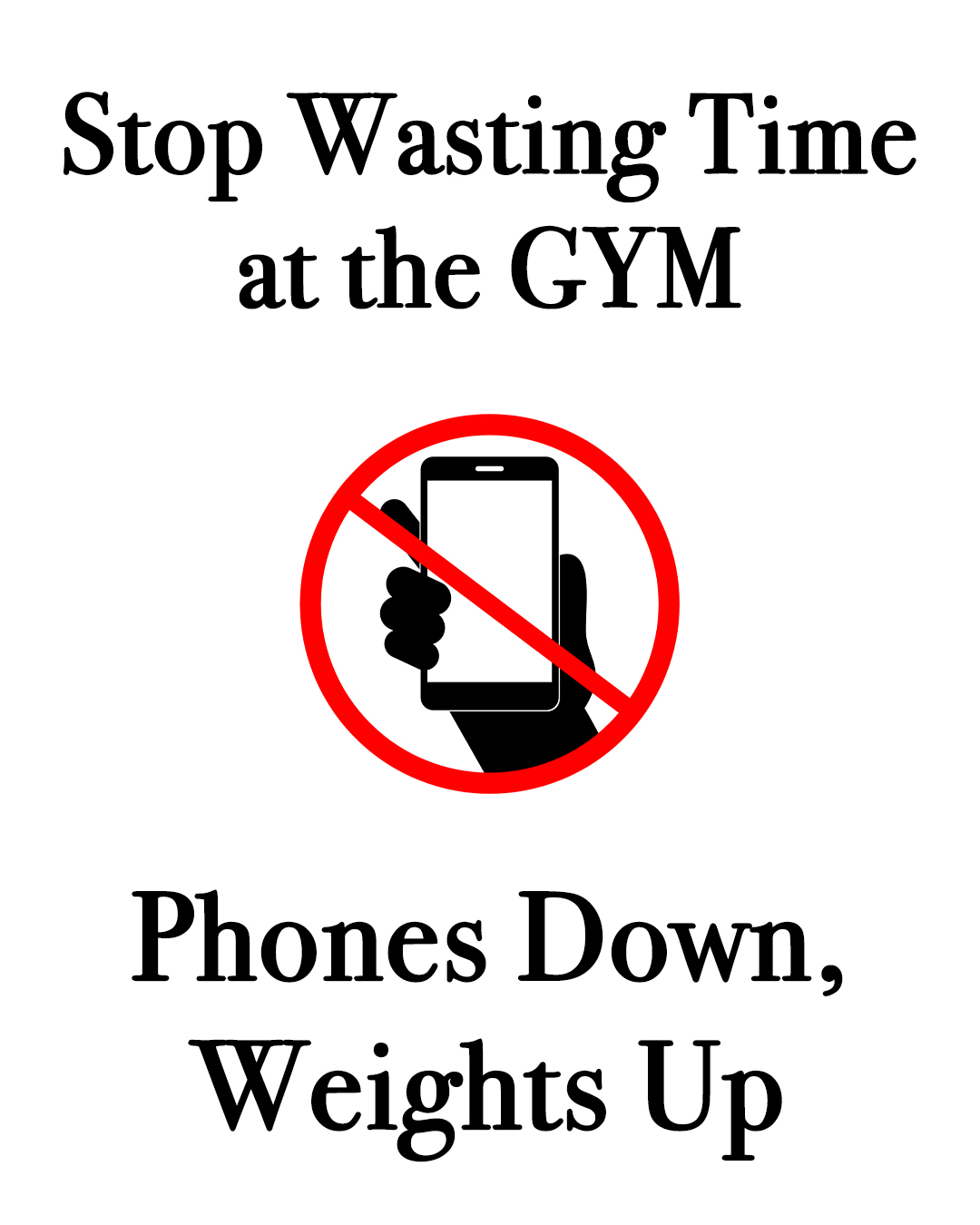Rest Time Between Sets
How long should you rest between sets? It depends on your goals. If you have weight loss goals, you should not rest very long between sets. But if you have strength goals, you may need more rest. There is a method to the madness, so put down your phone and get out your watch. Today, we're going to dive into the science so you can be more efficient at the gym.
Endurance Training
Do you have weight loss goals? Or more specifically, are you trying to burn more fat? If so, the best thing you can do is endurance training. Your goal is to move, move, move, or lift, lift lift! Lots of movement with very little rest will burn up calories, and ultimately burn up fat too. Therefore, you need to rest no more than 30 seconds between sets. There are two ways to accomplish this technique. You can pick an exercise, perform 12-15 reps, rest 30 seconds, and repeat for two more sets. Or, you can perform some type of circuit. More on circuits later. But whichever you choose, you are bound to burn more calories than ever!

No Phones
If we know one thing for sure, it's that being on your phone doesn't burn any calories. In fact, you are just wasting time at the gym and you are annoying others around you. Furthermore, there is more science coming out, that taking a break from social media to work out, is great for your body and your mind!
Circuit Training
circuit training is another example of endurance training. Although you should NOT take up several machines at the gym at one time, you can perform small circuits in a small area. Circuit training will really get your heart rate going, and you will really burn up some fat! Once again, the goal is lots of reps with very little rest.
For example, Perform 15 lat pulldowns, immediately followed by 15 pushups, and immediately followed by 15 air squats. Catch your breath, and do it again. You can work out your back, your chest, and your legs without taking up several machines, and without walking across the gym. Perform 3 to 4 sets, then pick 3 to 4 new exercises. Circuit training is great for improving both cardiovascular endurance and muscular strength.
And if you need help creating workouts or meal plans, contact a PFTA certified personal trainer like the one below. Click the image for more info.

Hypertrophy Training
On the other hand, if your training goal is hypertrophy (an increase in the size of a muscle), then experts tend to believe that resting 30 to 90 seconds between sets would be optimum. This short rest period would possibly increase acute circulation of growth hormone and testosterone which would lead to bigger muscles. Bagioli (2007) not only recommends 30-60 seconds of rest between sets, but he also recommends 3-5 sets of heavy, multi-joint exercises.
For example, on a back day, pick a weight for the lat pulldown machine that makes you fail around 8 to 10 reps. Rest 60 seconds, and perform another set of 8-10 reps. After 3 to 4 sets, head over to the seated row machine. Again, pick a weight that becomes too heavy after 8 to 10 reps. Do 3 to 4 sets of heavy rows with about 60 seconds of rest in between. Add some heavy dumbbell shrugs and you have the making of a solid lats and traps routine. Speaking of traps, click the image below for exercise demos on upper traps, mid traps, and lower traps.

Strength Training
Furthermore, when training for absolute strength, you will need to add more rest between sets. It normally takes 3 to 5 minutes for complete ATP restoration, so that's approximately the amount of time you need between sets if strength is your goal. If you rest only 60 seconds, you may only have 90% of your strength. For hypertrophy, 60 second might be OK, but for maximum strength gains, you're going to need more rest between sets.
A review by de Salles (2009) confirmed that subjects gained the most strength by resting 3 to 5 minutes between sets versus 1 minute of rest. This extra rest allows the subjects to fully recover and complete all their goal reps in the following sets. More reps at a heavy weight equals more volume which will produce higher strength gains.
If you enjoy learning more about exercise science and sports nutrition, you may enjoy our classes. Click the image below for more info.

Power Training
Finally, there is power training. If you want to develop more power in your sport, then you will need to utilize power exercises in your workout program. For example, if you're an athlete trying to increase your vertical jump, then try adding lower body power exercises to your routine. Plyo jumps and power cleans are example of such exercises. And just like strength training, you may need to rest 3 to 5 minutes.
The review by de Salles (2009) noted that power was increased significantly with 3 minutes of rest versus 1 minute of rest. But you don't have to be a collegiate or professional athlete to have power goals. If you are a recreational golfer, weekend baller, or in a beer league, you can still add power exercises to your routine. Pick a few exercises, get your rest, and get going!
Knowledge is Power
And if you want more tips on exercise and nutrition, add your email below. You'll receive weekly tips directly to your inbox. Plus, you'll also receive the occasional coupon code for our classes.
Summary
Hopefully you have a better idea of how much rest you should be getting between sets. The rest time between sets should be dictated by your training goal; therefore, stop looking at your phone and start looking at your watch. Shorter rest periods for more fat burning, and longer rest periods for more strength gains. But if you're new to working out, you may require more rest than prescribed. Listen to your body, catch your breath, and push out another set. Soon you'll be on your way to accomplishing your fitness goals. Happy health and happy training!

Written By
RAescobar, PFTA instructor and personal trainer
Sources:
Biagioli, Brian D., Advanced Concepts of Personal Training, 2007.
de Salles, Belmiro Freitas, Roberto Simao, Fabricio Miranda, Jefferson da Silva Novaes, Adriana Lemos, Jeffrey M. Willardson. Sports Medicine. Rest Intervals Between Sets in Strength Training. Vol. 39 Issue 9, p765-777. 2009.